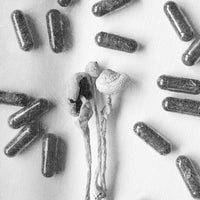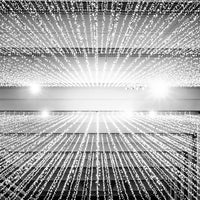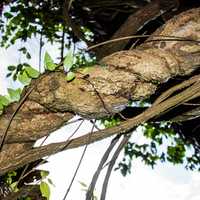This story was originally published in DoubleBlind Mag, a media company and educational platform at the forefront of the psychedelic movement. DoubleBlind is launching an online course titled “DB 101: How to Microdose” in July. In recent years, thousands of people have reported that microdosing has helped with their depression, insomnia, lack of focus, and just a general sense of despair. Microdosing has even shown promise for physical conditions such as irregular periods, Lyme disease, and migraines. It’s hard to know, however, with all the information about microdosing where to begin and who to trust. In this course, DoubleBlind will cover the nuts and bolts of how to microdose (i.e. dose, frequency, tolerance). The class will also cover all the most common conditions people microdose for, from depression to chronic pain, menstruation, and beyond. You can trust DoubleBlind to also give you an honest and rigorous assessment of the science—or lack thereof—behind microdosing, including what is known about potential short-term and long-term risks and contraindications.
While Silicon Valley tech workers didn’t invent microdosing, they may be responsible for turning it into a trend: The practice is often touted as a biohack for creativity, inspiring new ways to pump out code, design interfaces, or harness the entrepreneurial spirit. But, microdosing psychedelics may have real benefits that go beyond the reflective walls of San Francisco high rises.
A “microdose” is a dosage of a psychoactive substance that is too low to produce a noticeable intoxicating effect. Psilocybin mushrooms, LSD, and cannabis are the three most commonly microdosed substances. Anecdotally, the reasons why consumers microdose are many: Anxiety, creativity, and depression all make the list.
Yet, while consumers report many benefits to microdosing, the topic has long eluded the scientific community that’s responsible for putting these reports to the test. The 1971 Controlled Substances Act criminalized the possession, cultivation, and processing of many drugs, psychedelics included. The act, however, does a lot more than criminalize the possession of these substances. It also forces scientists to jump through immeasurable hurdles to access psychedelics for research.
But that doesn’t mean that some researchers don’t try.
Microdosing for Anxiety
Every once in a while, researchers are given express permission to move forward with psychedelic studies. Fortunately, the rising popularity of microdosing is spurring a push for real scientific research on the topic. Five years ago, there were virtually no studies on microdosing psychedelics. Yet, in the time since, academic journals published nearly 400 different papers on the topic.
But quality research is still in short supply when it comes to exploring the effects of microdosing for anxiety, or any other mental health condition. In some studies, anxiety was actually listed as a side effect of microdosing psychedelics, along with general discomfort and neuroticism. Yet, these are also common side effects of full-dose psychedelics, as well.
There are some glimmers of hope, however. Several reviews suggest that microdosing psychedelics may, in some instances, improve mood, enhance focus, and perhaps foster creativity. (These reviews are largely based on anecdotal reports from people who already microdose psychedelics.) Trials of psychedelic-assisted psychotherapy are also promising. Researchers have already explored MDMA, psilocybin, LSD, ketamine, and many other psychedelics in the mental health setting.
There are a few caveats about microdosing for anxiety that are worth mentioning, however, which include certain aspects of the psychedelic experience that cannot be quantified by Western science. It’s difficult to put a value on ego death, for example, or to fully define the meaning and personal significance of that kind of experience.
Psychedelics can inspire what famed researcher Roland Griffiths calls “the mystical experience,” which is a spiritual experience similar to a religious epiphany or state achieved by deep meditation. But, these experiences are usually occasioned by high doses of psychedelics, not small ones.
It’s possible that a sudden spiritual epiphany caused by a full dose of a psychedelic drug may engage the root cause of anxiety in an entirely different way than microdosing. In a sense, microdosing may be equivalent to taking medication, while a full-blown psychedelic experience may reconfigure your relationship to anxiety and trauma.
Currently, no scientists have studied the spiritual implications of microdosing, nor have they studied whether or not consistent microdosing can encourage a spiritual openness that’s similar to that achieved by full-dose psychedelic-assisted therapy.
How Often Should You Microdose Psychedelics for Anxiety?
For most consumers, microdosing psychedelics does not mean taking a small dose every day. As preclinical animal trials and interviews with regular microdosers suggest, microdosing is most often intermittent. That means consumers will take one small dose every three or four days, for up to several months at a time.
Microdosing intermittently rather than daily may help avoid developing a tolerance to any given psychedelic, at least according to user reports. “Tolerance” occurs when a consumer gradually becomes less sensitive to the effects of a psychedelic, rendering many of the spiritual and cognitive benefits moot.
Microdosing Acid for Anxiety
Scientists have already proven that, when taken with an open mind in the right setting, LSD can inspire long-term relief from anxiety and depression. Back in 2014, scientists completed the first placebo-controlled trial of LSD since the 1970s. The study was completed in Switzerland and sponsored by the Multidisciplinary Association of Psychedelic Studies (MAPS), an independent research organization that’s currently leading the global initiative in psychedelic research.
The trial explored the effectiveness of LSD-assisted psychotherapy in 12 patients facing life-threatening illnesses. By the end of the study, patients not only reported better moods and reduced anxiety overall, but experienced relief that continued for 12 months.
But here’s the catch. In this study, patients didn’t microdose. Almost all trials of psychedelics in clinical settings thus far have been full-dose. As mentioned above, a full-dose experience is very different from a microdose experience; the latter does not inspire hallucinations while the former does.
A microdose of LSD is considered one-tenth of a normal dose, which is around 10 micrograms. For most consumers, measuring out exactly 10 micrograms is a near-impossible task. So, many dedicated microdosers slice tabs of acid into eight or more pieces in an attempt to control their dose.
Thus far, there is only one double-blind human study that looks at the effects of microdosing LSD. However, the study did not look expressly at anxiety. Instead, it discovered that microdosing LSD does, in fact, change the way that consumers experience time. More specifically, it makes time feel slower so that seconds seem to last longer.
More informally, however, survey investigations by psychedelic researcher Jim Fadiman have found that many microdosers take LSD to alleviate symptoms of anxiety and depression. But there’s a catch here, too. Of the 418 people Fadiman interviewed, those who microdose LSD for anxiety alone had the most trouble. As Vice reports, anxiety can be an unwanted side effect of an LSD microdose.
Microdosing Mushrooms for Anxiety
Like LSD, full-dose psilocybin-assisted psychotherapy was successful in treating depression and anxiety caused by life-threatening illness. In a landmark study by Roland Griffiths, psilocybin-assisted psychotherapy inspired improvements in the outlook, mood, and anxiety levels of cancer patients—improvements that held up 12 months after treatment.
The profound changes caused by psychedelic-assisted psychotherapy are linked to the spiritual experiences that the substances inspire. A microdose of magic mushrooms, which is approximately 0.33 grams, is not likely to cause the profound mystical experience associated with the full-dose of the fungi. But that doesn’t mean that microdosing shrooms for anxiety is without benefit.
In 2018, Czech researchers compared the effects of microdosing psilocin to ketamine in rats undergoing a stressful maze test. Psilocin, along with psilocybin, is one of the psychoactive components in magic mushrooms. The research, while limited and highly experimental, did find that low doses of both substances had a mild anxiolytic effect.
Unfortunately, however, scientists have yet to study mushroom microdosing in a clinical setting. However, both the internet and survey studies are ripe with anecdotal accounts of people who experiment with microdosing. In one review, a self-described microdoser explained:
“I have had very positive results from infrequent psilocybin microdosing. I have found fast and relatively long-lasting relief from depression and social anxiety doing this, as compared to other pharmaceutical options I’ve been offered.”
Microdosing DMT for Anxiety
N-N-Dimethyltryptamine (DMT) is another psychedelic of interest to mental health researchers. DMT is found naturally in many different plants and it is the primary molecule that contributes to the active effects of ayahuasca. When taken on its own in a full dose, DMT inspires an intense but relatively short-lived psychedelic experience. Along with LSD and psilocybin mushrooms, DMT is considered an entheogen. The molecule’s reputation for inspiring a strong quasi-religious experience has even earned it a special nickname—“the spirit molecule.”
Scientists have actually completed one preliminary experiment on microdosing DMT for anxiety and depression. A team led by University of California Davis researcher Lindsey Cameron published the first study on DMT microdosing in 2019. But the early study wasn’t completed in humans. Instead, the team tested the effects of chronic, low-dose DMT on rats.
In the trial, Cameron and her team gave rats microdoses of DMT that were too small to induce hallucinations. Then, the scientists forced the rodents into situations that would normally trigger anxiety and depressive behaviors in rodents. They then continued to administer these ultra-low doses of the psychedelic every third day for three months. The results were positive: Microdosing DMT appeared to ease fear and depression-like behavior during stressful events.
Of course, experimenting with rodents is a far cry from meaningful trials and pilot programs of DMT in human therapy. Normally, positive results in an animal test would pave the way for future clinical trials in humans. But, with psychedelic research, things aren’t that easy.
Thanks to the legal restrictions imposed by the Controlled Substances Act, scientists are more or less limited to animal studies when researching these compounds. To graduate to human clinical trials would require special permissions, loads of red tape, or moving research initiatives outside the country. These same barriers are not present for scientists performing research and development on new synthetic pharmaceutical compounds.
If you or a loved one is struggling with substance use, contact the Substance Abuse and Mental Health Services Administration (SAMHSA) National Helpline at 1-800-662-4357 for support. If you’re looking for peer support during or after a psychedelic experience, contact Fireside Project by calling or texting 6-2FIRESIDE.




